Lesotho, known as the kingdom in the sky, the mountain kingdom, rich is culture, a high-altitude, landlocked kingdom encircled by South Africa, is crisscrossed by a network of rivers and mountain ranges including the 3,482m-high peak of Thabana-Ntlenyana.
On the Thaba-Bosiu plateau, near Lesotho's capital, Maseru, are ruins dating from the 19th-century reign of King Moshoeshoe 1.
Thaba Bosiu overlooks iconic Mount Qiloane, an enduring symbol of the nation’s Basotho people. Lesotho has beautiful destination and site seeing such as the Maloti Mountains, Thaba-Bosiu, Katse dam, Thabana-Ntlenyana, Bokong Nature Reserve, Kome caves, Morija Museum, Thaba-Bosiu Cultural Village and Maletsunyane Falls, Sehlabathebe National Park, The Lion Rock Mountain, Moteng pass, Basotho hat, Katse dam Botanical Gardens, Molimo Nthuse Lodge, Lekhalong la Baroa(God help me pass), Liphofung Caves, Khotso-Ntso, Afriski Mountain Resort, Drakensburg Mountains amongst many other destinations and site seeing.
Maloti Mountains are a mountain range of the highlands of the Kingdom of Lesotho. They extend for about 100 km into the Free State. The Maloti Range is part of the Drakensberg system that includes ranges across large areas of South Africa. “Maloti” is also the plural for Loti, the currency of the Kingdom of Lesotho. The range forms the northern portion of the boundary between the Butha-Buthe District in Lesotho and South Africa's Free State
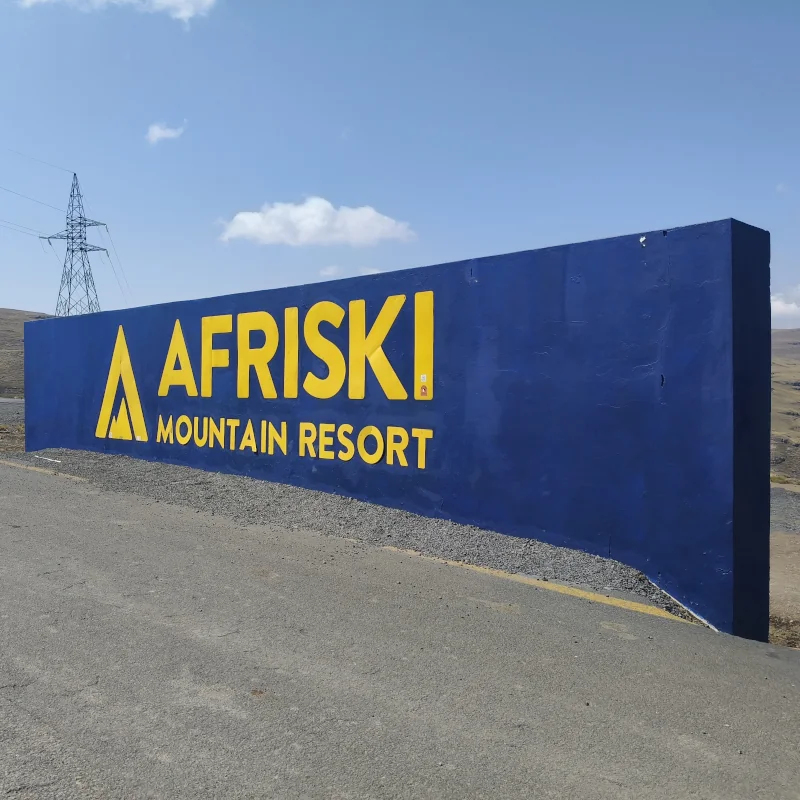
Whether you grew up on the slopes or you’re new to skiing and snowboarding, Afriski offers thrilling winter sports adventures for every level of ability. If you’re a beginner, all you need is a sense of fun and the expert guidance of our ski instructors. If you’re more proficient on the slopes, you’ll find Afriski an even more rewarding experience. There’s a timeless quality to the rugged peaks and dramatic waterfalls. The Basotho people – often clad in blankets and gumboots – have an uncanny knack for appearing as if by magic, and so too do their smiles. These will be some of the first things that strike you about Lesotho and then there’s Afriski. Whether you’re here in Lesotho and at Afriski in winter or summer, you’ll find that you’re on a natural high from the moment you arrive. It’s a feeling that will last long after you’ve descended the mountain passes and returned home. The magic of Lesotho never leaves you – it’s one holiday destination that will never let you down. By adding modern African snowmaking facilities (to give Nature a helping hand) and ski lifts, Afriski made it possible for you to enjoy the kind of experience you previously had to travel overseas for. Why spend time in airports and on planes when you could be spending more time on the Afriski slopes?
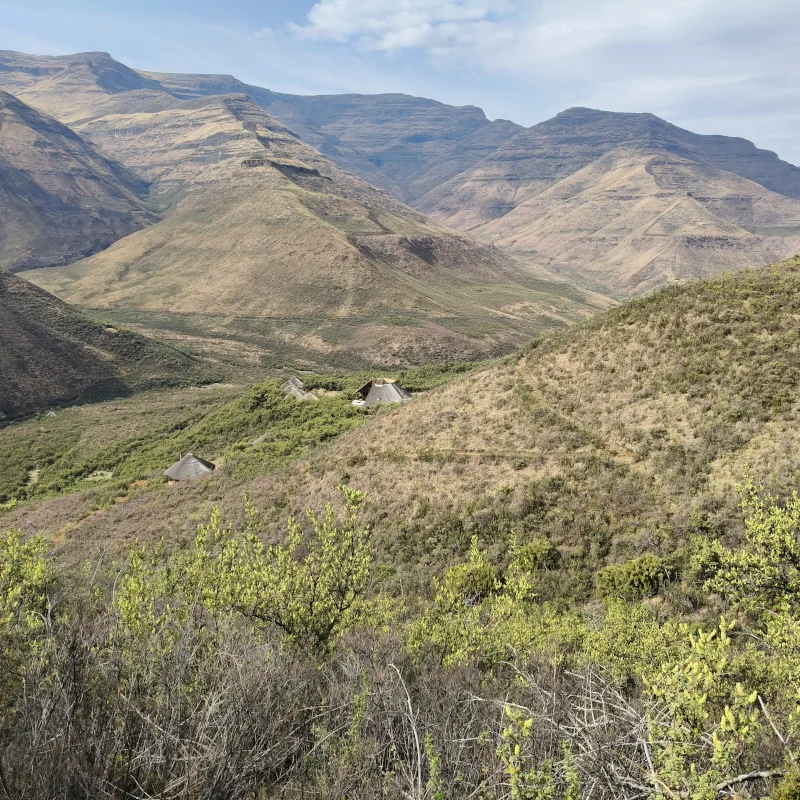
Lesotho’s most accessible national park, set in the southern Maluti Mountains 150km northeast of Maseru, is known for its rugged montane vistas, rich sub-Alpine floral diversity, beautiful waterfalls, diverse birdlife, and excellent network of hiking and horseback trails. Extending across 56 square kilometres of sensational mountain scenery, Ts'ehlanyane boasts an impressive altitude span of 1,940 to 3,110 metres and it is flowed through by four major rivers including the Holomo and tributary Ts’ehlanyane. The upper slopes of Ts'ehlanyane support a cover of rare heath-like mountain fynbos studded with colourful aloes, irises and other flowering plants that bloom most prodigiously in spring. It is also the world’s most important stronghold for the berg bamboo Thamnocalamus tessellatus, a Maloti-Drakensberg endemic that lends its Sotho name Ts’ehlanyane not only to the park but also to the river along whose banks it is particularly prolific
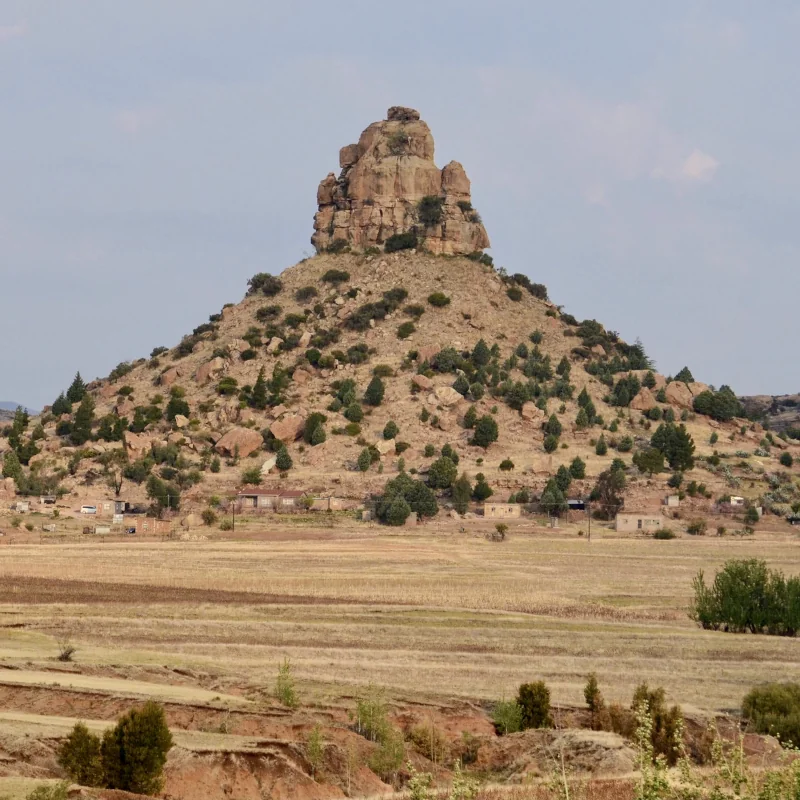
It is a sandstone plateau where King Moshoeshoe I, the founder of the Basotho Nation established what turned out to be a formidable fortress that protected his People during amongst others, the Lifaqane (Mfecane) war. "Thaba Bosiu" which means "Mountain at Night" was believed to possess supernatural powers which made it grow into a tall mountain during the night leaving enemies who tried scaling it still stranded on its cliffs and vulnerable for attack the next morning. Located 24km outside of the city of Maseru, Thaba Bosiu is a National Monument and Lesotho's foremost tourist destination holding great historical significance as the birthplace of the Basotho People. Thaba Bosiu offers an on-site restaurant, museum, cultural village, and amphitheatre.
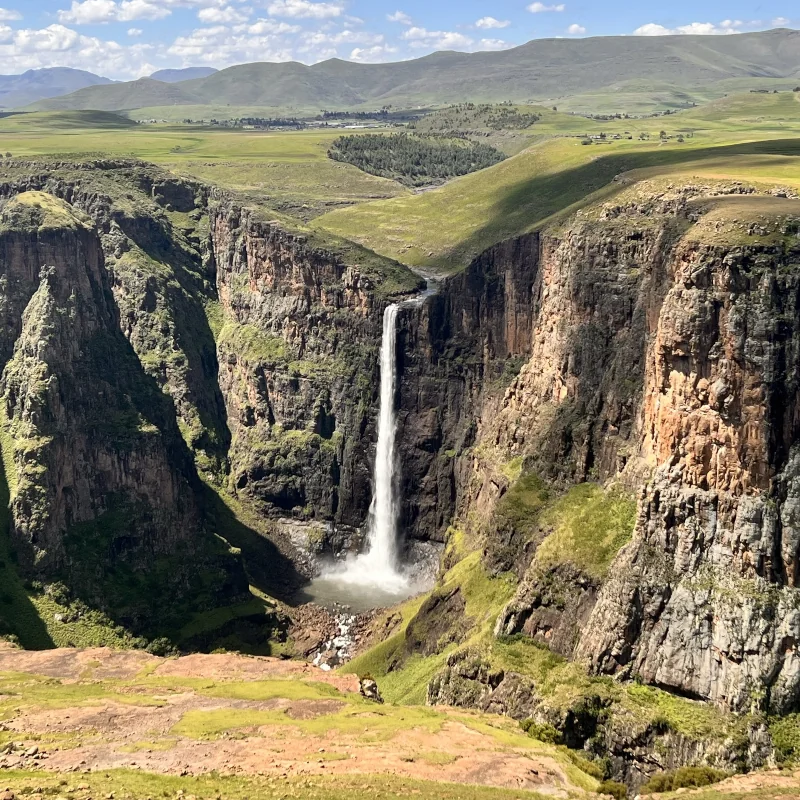
Semonkong lodge - place of smoke, experience one of the most beautiful and remote countries in Africa with Semonkong Lodge. Landlocked by South Africa and commonly known as the Mountain Kingdom, Lesotho is a country with the highest lowest point in the world. Hiding away in the magnificent Maluti Mountains, you will discover the gem that is Semonkong Lodge, built on the banks of the Maletsunyane River using only local stone & thatch, offering just the right balance between civilisation and rustic elegance; a perfect base to explore this area on the iconic Basotho pony, mountain bikes or dare to take on the highest commercial abseil in the world. Just down the river from the lodge, the mighty Maletsunyane Falls is one of the highest single dropping Falls in Africa, creating a haze of Smokey mist as the water plummets with savage splendour 186m down into a spectacular gorge. This is how Semonkong, The Place of Smoke, got its name. The well-known Duck and Donkey Tavern and Restaurant, provides a popular meeting place for both locals and guests and boasts affordable, delicious homemade meals and cold Maluti beers. Semonkong lodge offer activities such as abseil, the longest commercially operated single-drop abseil in the world, pony trekking, horse racing, donkey pub crawl
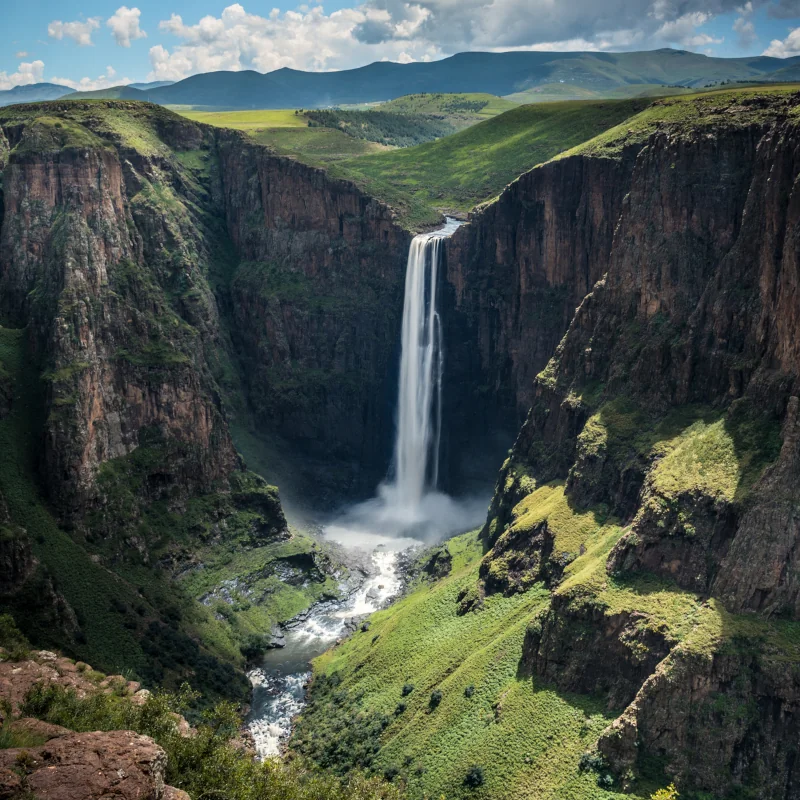
We dare you to step off the 204m high ledge of the Maletsunyane Falls and experience the ultimate adventure. With your adrenaline levels soaring, you will witness the absolute natural beauty of this gorge in all its splendour, whilst descending through the spray from the waterfall alongside you. We promise – this will be a moment you will never forget! Word of warning – this is not for the faint-hearted, but it offers a once in a lifetime experience and entitles you to some serious bragging rights with your friends. Never abseiled before. Don’t worry, a practise session the day before on our 25m cliff close to the Lodge will prepare you for the big day and is included in the cost of the abseil. A 4×4 trip and short hike the next day will take you to the abseil and then it’s three, two, one… GO time!
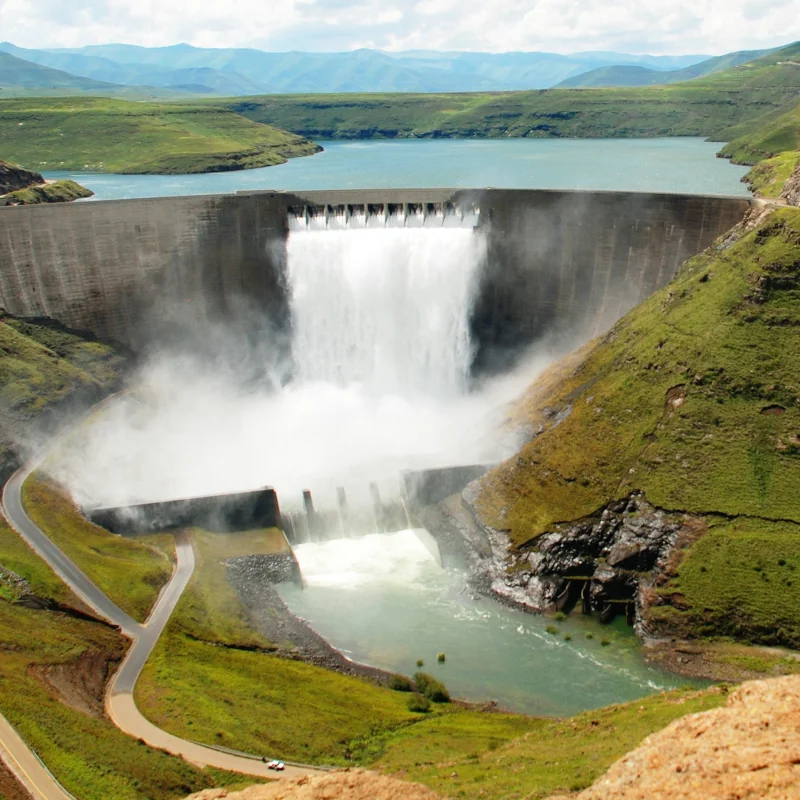
One of the most ambitious engineering projects ever undertaken in South Africa, Katse is the continent’s second-largest double-curvature arch dam. Some 710-metres long and 185-metres high, it impounds a deep, squiggly, multi-tendrilled reservoir that extends back more than 30km along the Malibamat'so River when full and has a total surface area of 38.5 square kilometres. Katse Dam, Lesotho Reputedly named after a wealthy local farmer, Katse was constructed in the early 1990s as the centrepiece of the Lesotho Highlands Water Project (LHWP). Water from Katse is funnelled through an 82km underground tunnel into the Ash River near Clarens, South Africa, from where it flows along a succession of natural waterways into the Vaal Dam, the main reservoir in the industrialised and densely populated South African province of Gauteng. Visitors coming on the A25 from Maseru will pass the tunnel’s intake tower to their left as they cross the reservoir on Mphorosane Bridge near Ha Lejone, some 30km before reaching the dam itself. Also visible from the bridge is a cluster of circular fish farms that produces the trout for which Lesotho is famed.
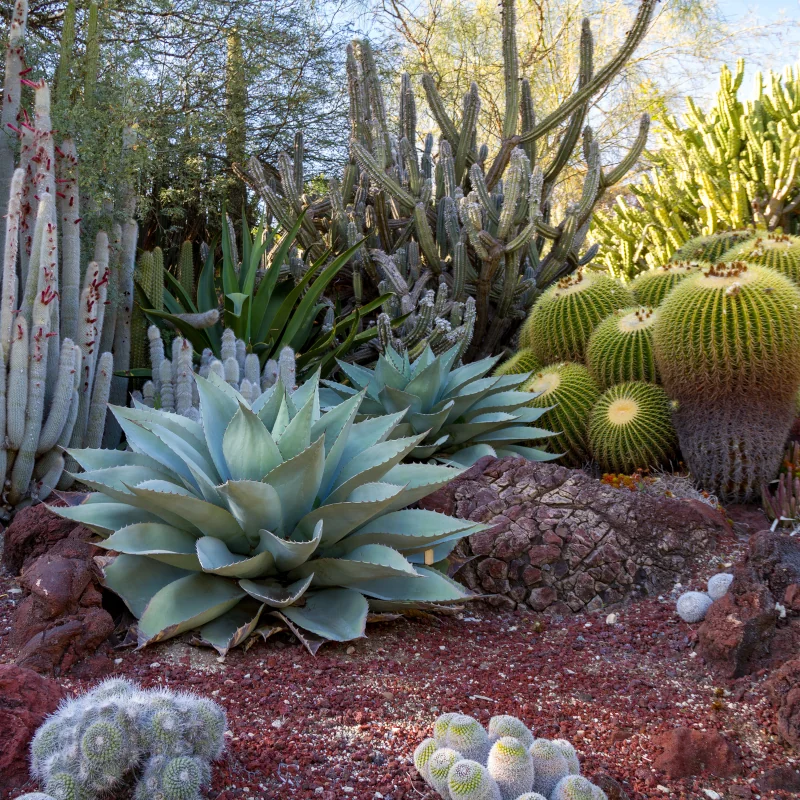
The gardens were created as a result of plant rescue missions to mitigate the impact of the Katse Dam, particularly spiral aloes. The collection has a focus on traditional Sesotho medicinal plants and has a large seed bank. At an altitude of 2,229 meters it claims to be the highest botanical garden in the southern hemisphere.
The Ha Kome Cave Village is situated at Pulane area in Berea district. The caves were a hideout for the Basia and one Bataung clans during the Lifaqane Wars and cannibalism. The cave is still inhabited by their descendants to this day. There are also faded San paintings in the cave which indicates that the San also occupied the cave some time prior to their arrival albeit briefly. The Kome Crafts and Information Office that is about 500 metres up the road from the caves houses locally made crafts including crafts from Lesotho Mountain Crafts in Teyateyaneng, 21 km from the centre. You will also find a tuck shop and a small café at the centre. At the Kome Crafts and Information Centre you can have picnic and even strike up a barbecue/braai at one of its many stands.
The dinosaur footprints at Subeng are embedded in a sandstone slab in a small stream and rank among the most important sites of its type in the country. Discovered in 1955, Subeng incorporates the footprints of at least three and possibly as many as six different species of dinosaur, some with five toes on their feet, and others with three. Look carefully and you will also see fossilised worm trails and mud cracks on other slabs in the riverbed.
Situated at the Molimo Nthuse Pass, on the way to Thaba Tseka, the lodge nests deftly in a forest just by the roadside. The Lodge is located about 50 km from Maseru along the road to Mohale Dam. The Lodge is located near the old Molimo-Nthuse Pony trekking facility and was known for adventure tourism e.g. hiking and pony trekking to Qiloane Waterfalls, camping and nature walks. The place takes pride in the tranquillity, natural forest, chapping birds and the chanting river water that gives the guest a good rest and body, soul and spirit revival. It still maintains its attractiveness to the travellers for being a mid-way stop-over for tourists visiting Mohale dam.
Lesotho’s smallest nature reserve protects a dramatic and atmospheric rock overhang known for its historical association with the 19th-century King Moshoeshoe I and for housing a collection of rock paintings attributed to the San (Bushmen) hunter-gatherers who inhabited the region in prehistoric times. Liphofung’s other main claim to fame is that King Moshoeshoe I, founder of the Sotho Kingdom, sheltered in the overhang when he travelled to the area as a young man, and then used it as a natural sanatorium for injured soldiers during a battle undertaken in 1840. Liphofung (literally Place of the Eland) is named for the paintings of Africa’s largest antelope left behind on its walls by the San hunter-gatherers who dwelt and performed shamanic rituals in the deep overhang for a period of around 5,000. Other rock art at the site includes depictions of people hunting, stick-fighting and participating in a rainmaking ceremony. Though the paintings are more faded that at other sites in Lesotho such as Ha Baroana and Tsatsane, they are accompanied by excellent explanatory panels that show what they would have looked like in their prime and place them in a cultural context.
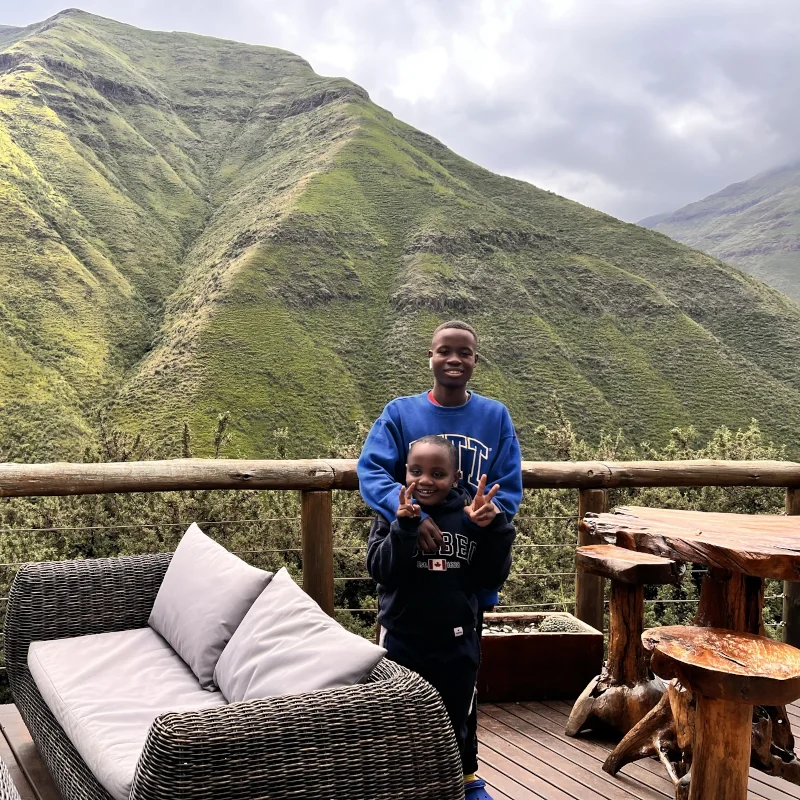
Maliba Lodge Afriski Mountain Resort LESOTHO Maliba Lodge is the first and only 5-star luxury Lesotho accommodation in Southern Africa. It is in the pristine Ts’ehlanyane National Park, in the heart of Lesotho and is known as the Mountain Kingdom. Maliba Lodge is a mere 4.5 hours’ drive from Johannesburg International Airport and in that short space you are transported to another world. Maliba Lodge offers accommodation to suit all the budgets from luxury mountain lodge to self-catering lodges with the mountain view. Our award-winning lodge has a spa, Bana Kids Club, 5-star gourmet restaurant, Bistro and amazing staff that cater to your every need. Prepare your Lesotho vacation with Maliba Lodge and enjoy another unique side to Africa.
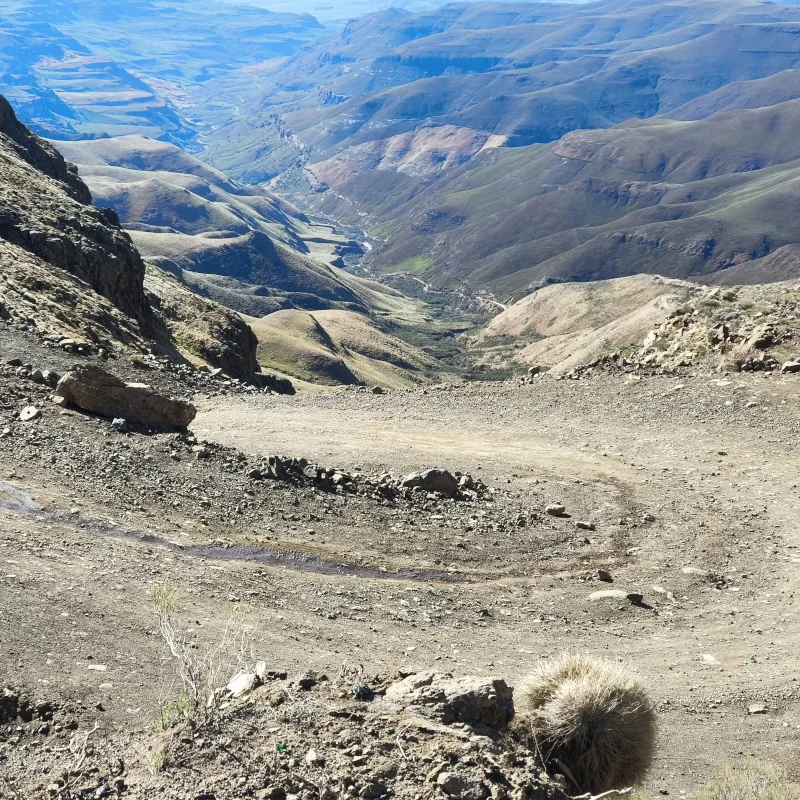
The Sani Pass is one of the most spectacular mountain passes in SA, meandering over the Drakensberg escarpment into Lesotho. The Sani Mountain Pass is well known by the 4X4 community, who use the treacherous Pass as a playground to validate the ability of their vehicles and put their skills to the test. Sharp hairpin bends, loose dirt road and the ever-changing weather give for the ultimate 4X4 experience. However, experience is key! Please be sure to check the weather report before embarking on your journey!
Malealea is situated in a remote but breath-taking part of Western Lesotho and offers a chance to experience traditional Basotho life. A journey on horseback is both exhilarating and peaceful. Along any hour on our trails, your pony will guide you up and down rocky switchbacks and across trickling ravines, all while you take in Malealea’s breath-taking scenery. You will form a relationship with the Basotho pony who carries you. They are gentle and trained creatures who will trust you as you put your trust in them
This big pass is located on the A3 main route between Maseru in the west and the much smaller village of Fosi in the east. It displays an altitude variance of 487m over a distance of 11.9 km producing an average gradient of 1:27, but there are several very steep sections at 1:5. The pass is also commonly known as Bushman's Pass or Bushmen's Pass. Most maps use the spelling Bushman's, but the official sign at the summit is spelled as Bushmen's Pass.
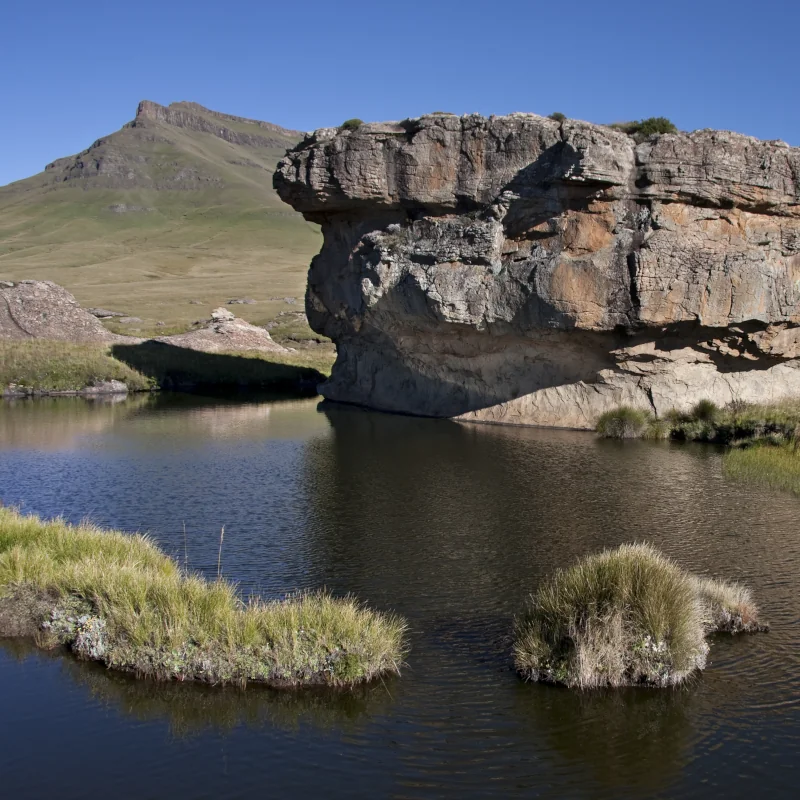
Lesotho’s oldest and largest protected area, Sehlabathebe National Park forms part of the cross-border Maloti-Drakensberg World Heritage Site as inscribed by UNESCO. One of the region’s most isolated and dramatic national parks, it protects a panorama of rolling grassland studded with immense rock arches, sandstone caves, waterfalls and rock pools, all set below an imposing formation known as the Devil’s Knuckles. Other attractions include colourful wildflowers, large mammals such as grey rhebok, baboon and black-backed jackal, trout fishing in the streams, typical Afromontane birds including Cape vulture and Drakensberg rockjumper, and an incredible 65 prehistoric rock art sites.
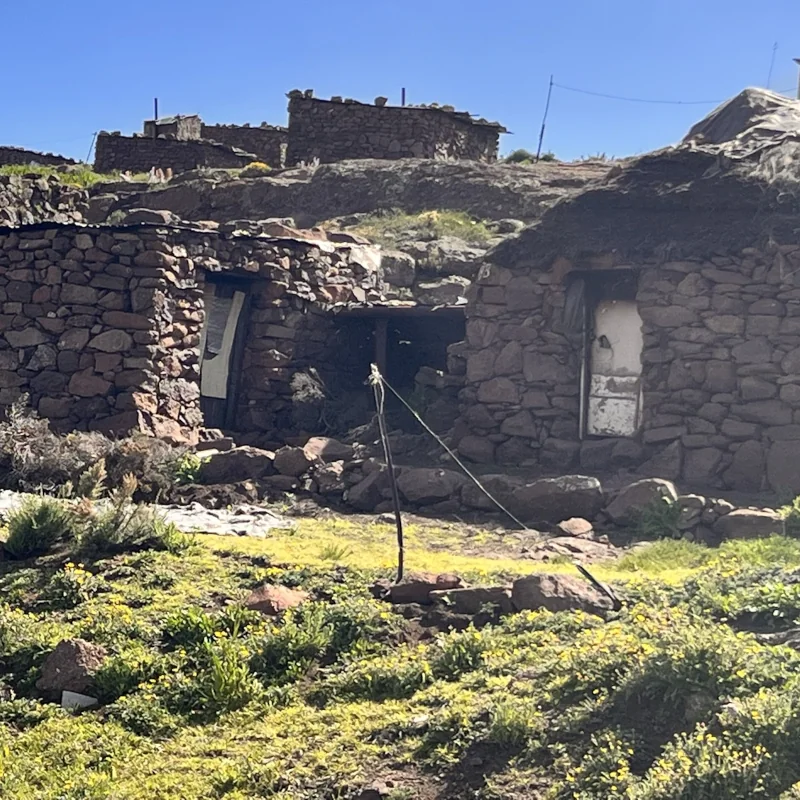
This major pass is located between the town of Kala in the west and the Afriski Resort in the north in the northern quartile of Lesotho. It has a huge altitude gain of 896m that stretches over a distance of 15.3 km which converts into an average gradient of 1:17, but don't be fooled by that figure as it includes the descent. Most of the ascent from the western approach is between 1:5 and 1:8. The 91 bends, corners and curves will require your full concentration. Amongst those there are 4 extreme hairpin bends and one full horseshoe. The A1 road is the major route across the northern sector of Lesotho and as such carries a fair volume of traffic including some very large trucks. These need the full width of the road to negotiate the hairpin bends, so be fully aware of this as you proceed along this pass. The pass has been the scene of numerous accidents, mostly involving trucks and buses. All the passes in Lesotho are above the snow line, so driving here in winter invariably means having to deal with snow and ice, which is to be avoided if possible - and especially so if you are not in a 4WD vehicle.
Morija Museum & Archives, also known as Morija Museum, is located in Morija, a large village in the Maseru district of Lesotho. The museum was formally opened in 1956 and entered its present permanent facilities in 1989. The purpose of the museum is to carry on the tradition of Morija, as a centre of learning, innovation and excellence, in Lesotho. Morija Museum is home to many cultural treasures including, traditional Basotho artifacts as well as Lifaqane and Boer War memorabilia. The archives portion of the museum includes documents dated as far back as 1826. This collection is extremely rich in 19th century documentation related to Lesotho. The Morija Arts & Cultural Festival is an annual event coordinated by the Morija Museum.
589 Rudolph street
Constantia Park
Pretoria 0181
South Africa
629 Mountainview
Otterburn Park
Québec
Canada

